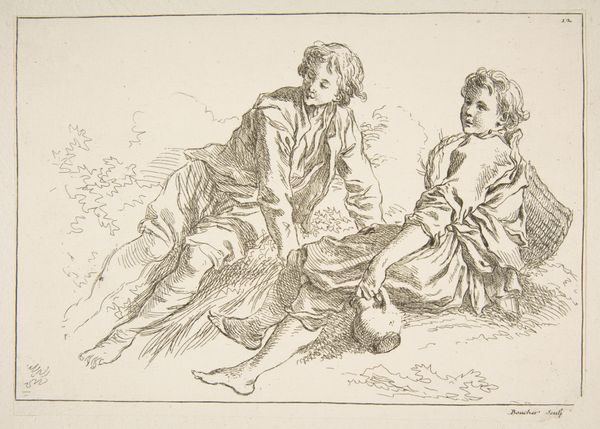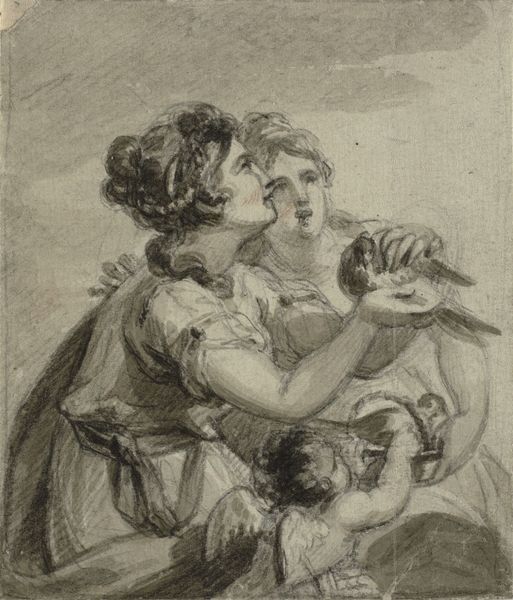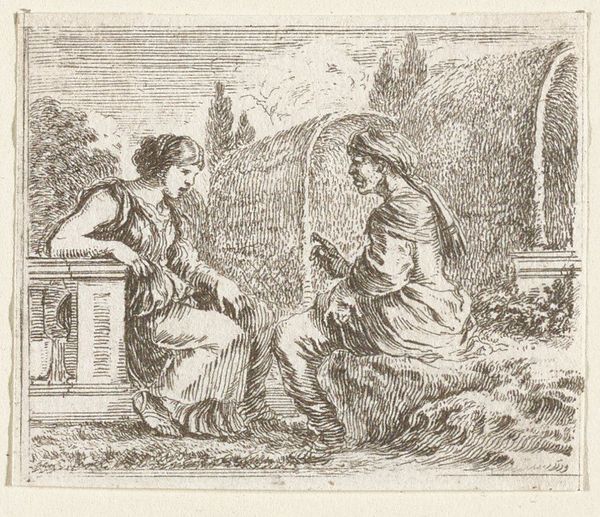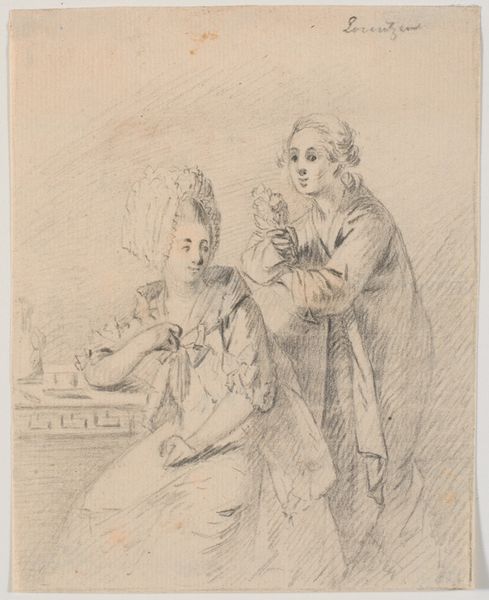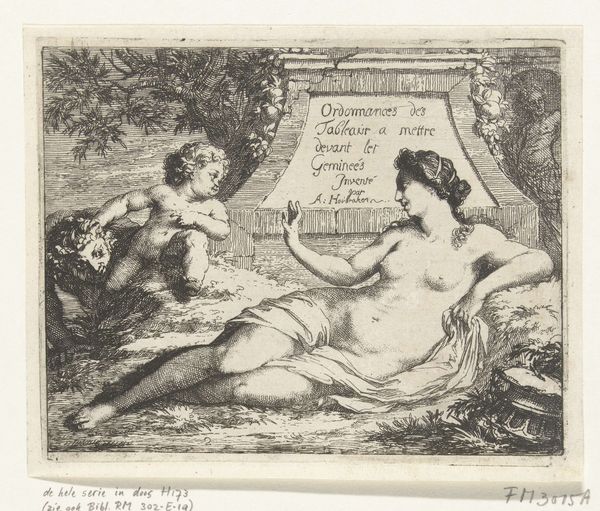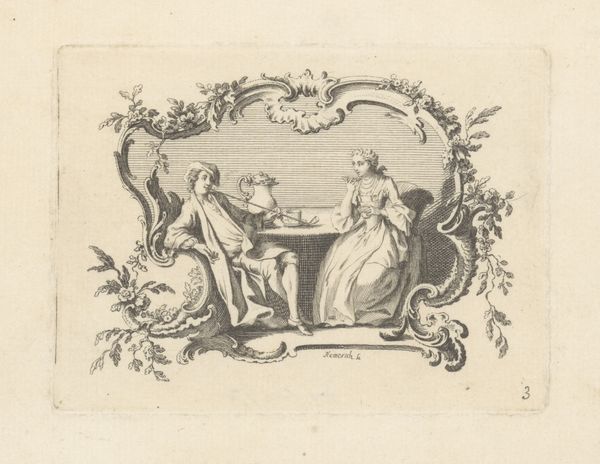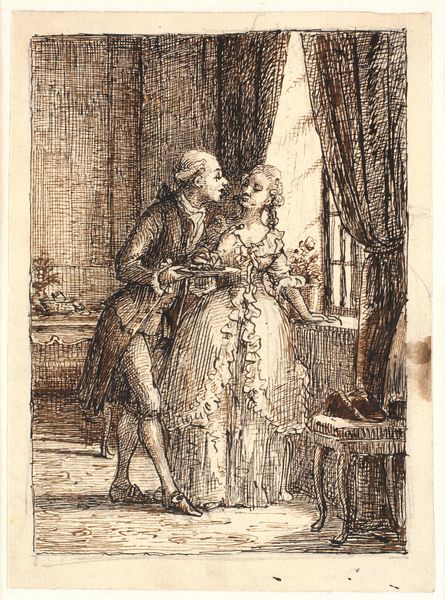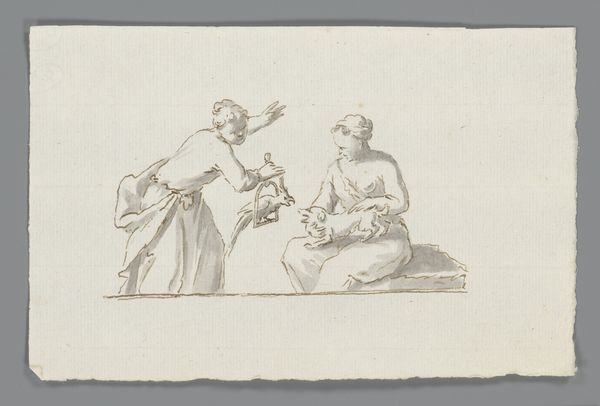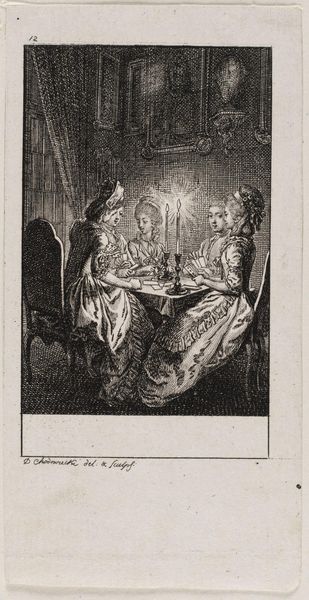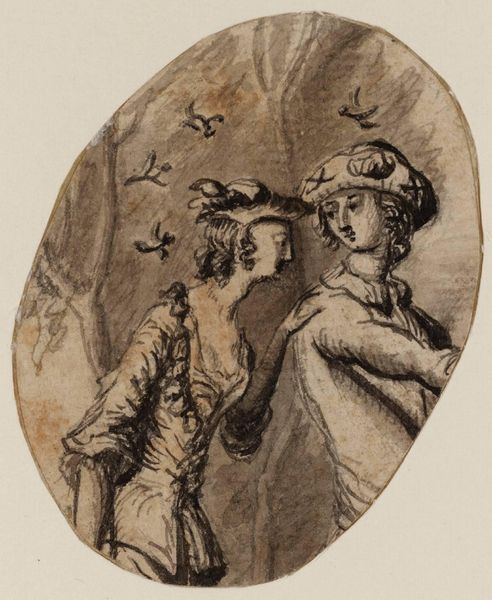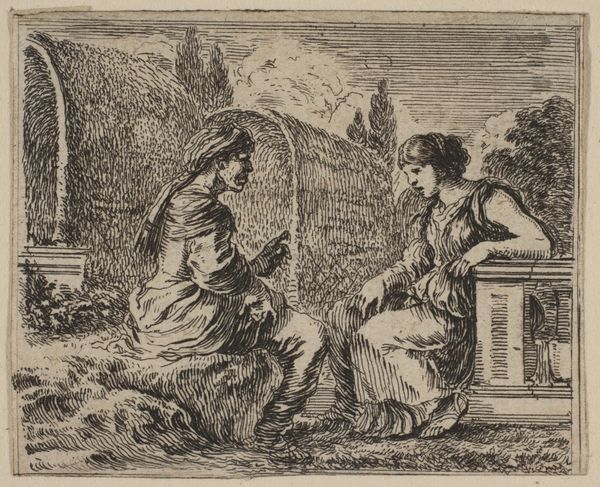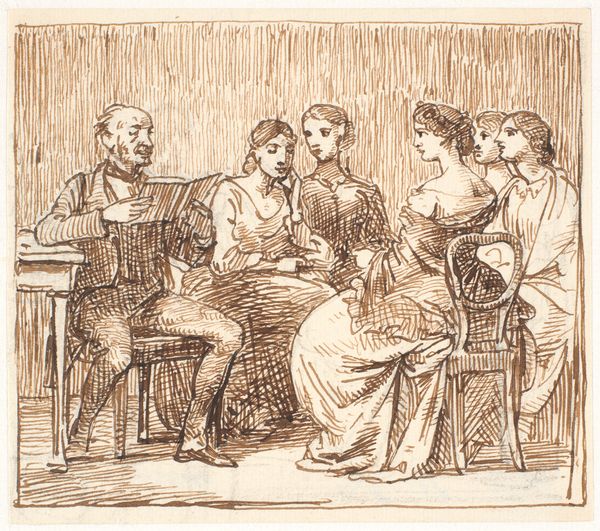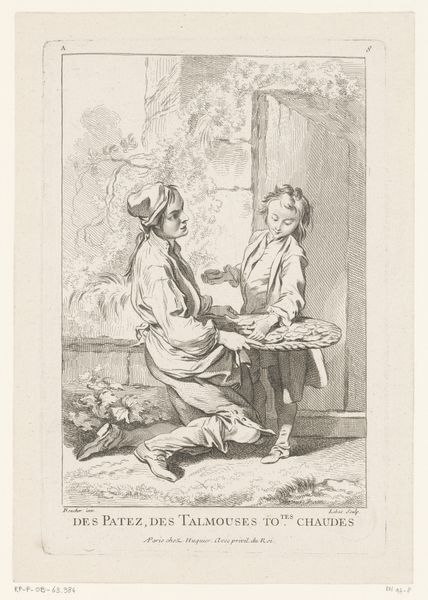
drawing
portrait
drawing
genre-painting
rococo
Dimensions: height 191 mm, width 172 mm
Copyright: Rijks Museum: Open Domain
Editor: Let's explore "Jonge vrouw met bloemenmand en jongen" by Gilles Demarteau, a drawing that exists somewhere between 1732 and 1776. I’m immediately struck by the delicate, almost dreamlike quality. It feels both intimate and idealized. What's your read on it? Curator: It's interesting to consider this drawing within the context of 18th-century French society. Genre scenes like this became incredibly popular, reflecting a shift in patronage from the aristocracy towards the burgeoning middle class. These patrons wanted images of everyday life, albeit often romanticized. How does the portrayal of these figures relate to societal ideals of youth and beauty at the time? Editor: Well, they seem almost... staged. Not necessarily realistic, even if it’s meant to be "everyday life". Curator: Precisely. The artist is not merely recording reality but is actively constructing a specific vision of innocence and grace. Think about the Rococo style—known for its lightness, elegance, and playful themes. It's interesting that this artist is a printmaker as the purpose would then have been distribution of imagery more widely. What role did the widespread distribution of imagery through prints play in shaping public perceptions and reinforcing social hierarchies? Editor: So, these prints would have influenced, or perhaps even dictated, the era’s aesthetic values? Creating a desire or longing for an artificial world? Curator: Exactly. The art market, powered by printmaking, helped create trends. And beyond just aesthetics, images like this also speak to the social currency of beauty, youth, and leisure, elements highly valued and carefully cultivated within that society. The depiction of the subjects are in many ways quite constructed social performances. Editor: That’s fascinating. I hadn’t considered the role of printmaking in propagating not just art but also ideals. Curator: Considering art in this historical context broadens our understanding of visual culture as a shaper and reflection of society itself. Editor: Right, seeing beyond the surface beauty into its function within a particular culture adds a new layer to my perception. Thank you.
Comments
No comments
Be the first to comment and join the conversation on the ultimate creative platform.
